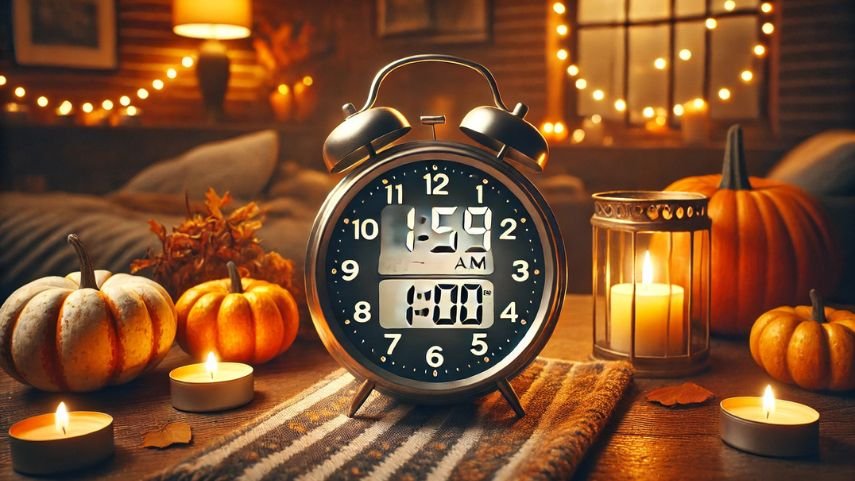As we begin to think about what 2024 holds for us, many across the US may have the annual time change on their minds Daylight Saving Time (DST). For those wanting to know when the clocks will switch this year and the remnants of the practice in the modern world, here’s all you need to know.
When Does Daylight Saving Time End in 2024?
Daylight Saving Time will officially end on Sunday, November 3rd, 2024. Most people over in the United States will ‘fall back’ and move back their clocks by an hour to standard time so this time around the adjustment is that of an hour. This means you will enjoy an hour of extra sleep but it also indicates shorter days and quick sunsets.
Why Do We Observe Daylight Saving Time?
The original reason for Daylight Saving Time was to extend the usefulness of daylight during the summer months. It was believed that if the light was systematically shifted to the evening instead of the morning, it would cut down on the dependence on artificial light and thus conserve power.
The measure was first adopted during World War I and gain more popularity in World War II. In the US, this measure was officially recognized under the Uniform Time Act of 1966. Even though there has been a discussion on its usefulness in energy conservation, the practice is still in use but some people tend to prefer complete abolishment.
Pros and Cons of Daylight Saving Time
As it is with most issues, there are advocates and opponents for Daylight Saving time. Below the article lists a few of the reasons for which the practice remains controversial:
Pros:
More Daylight In the Evenings: Most individuals prefer having more daylight late in the day during summer because that means more time is available for outdoor activities.
Increased Consumer Spending: It has been reported in some research that with DST more consumers shop for goods and services when it is still light after working hours.
Energy Consumption: Although it is a hotly contested topic, some of the people who initiated DST claimed it would result in the saving of energy due to a reduction of the use of AI in the evenings.
Cons:
Disruption of Sleep Patterns: The twice-a-year shift in the clocks may cause some people to be asleep during their biannual skillset changes, this situation can lead to some adverse health consequences.
Impact on Farmers and Other Industries: Numerous farmers believe that the shift in time disenfranchises them, creating disharmony in the natural order of work and livestock management.
Modern Energy Savings Do Not Matter Now: As switches towards energy effective lighting and other electric devices become more common, some claim that the positive results of going into the daylight savings times are now minimal.
Will Daylight Saving’s end forever?
There have been voices from the public asking on whether we should do away with the day light saving time. Recently, a few states have managed to pass bills in support of staying in the Daylight Saving Time but these changes cannot go in action without several permission from the federal government. Surprisingly many views seek to mitigate the bi-annual clock change claiming that it creates more losses than it solves problems.
But in 2024 this was not the case, on a state level so far no measures have been taken to formally end the practice to date, and we will continue to observe time changes as normal for the near future.
How to Get Ready for the Change of Time
Although the day change in November gives us one hour more in bed, bulky people and active around the shift can allow slippage to occur in the order that is practiced. Most people still feel the lag in the form of an internal clock.
Set your sleep time earlier than normal: If you go to bed a few minutes earlier, let’s say 15-30 minutes closer to the week where the time is made in place, then it will assist your body in adjusting towards a greater change.
Get Natural Sunlight: Regulate your internal clock by exposing yourself to light during the daytime and the shift will become much easier.
Limit Screen Time Before Your Bed: Refrain from turning on screens at night as they emit blue light which can disrupt falling sleep.
Check Your Devices: A large percentage of smart phones and computers do change the time themselves, but all other devices like clocks and ovens need to be set back 1 hour.
Conclusion
While some may question the rationale of observing Daylight Saving Time, for now, it’s something that largely the majority of people will continue with. With the clocks set to go backwards by 1 hour on November 3rd, the time is appropriate to understand how this change is going to affect you and your activities. Whether you can’t wait to go to bed for that extra hour of sleep or bemoan the fact that the days darken too quickly, the last Sunday of March will be yet another landmark date for the the season changing after Daylight Saving Time in the year 2024.
Read Also:Discover Paros in Greece: 5 Reasons to Make It Your Next Getaway






